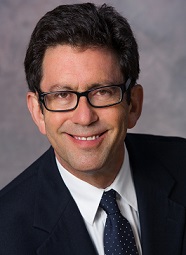Colonoscopy is at the heart of gastroenterology. It is a diagnostic and therapeutic tool and it has become the central figure in the crusade against colorectal cancer. Seven gastroenterologists reflect on how the procedure has changed over the past few decades, how it is used today and what the future holds for colonoscopy.
Question: How has the practice of performing colonoscopy changed since your first entered the medical field?
 Walter Coyle, MD, Scripps Clinic (San Diego): I finished my GI training in 1993. At that time, flexible sigmoidoscopy was still the major form of colorectal cancer screening. But, from that time to the early 2000s there was a move towards colonoscopy. That push came from the GI societies and the U.S. Preventative Services Task Force. We had data; colonoscopy saves lives. Now, the problem is getting everyone who needs it to be screened.
Walter Coyle, MD, Scripps Clinic (San Diego): I finished my GI training in 1993. At that time, flexible sigmoidoscopy was still the major form of colorectal cancer screening. But, from that time to the early 2000s there was a move towards colonoscopy. That push came from the GI societies and the U.S. Preventative Services Task Force. We had data; colonoscopy saves lives. Now, the problem is getting everyone who needs it to be screened.
David Johnson, MD, MACG, FASGE, FACP, division chief, gastroenterology, Eastern Virginia Medical School  (Norfolk): Colonoscopy has changed in a number of ways; but one of the most important is in its availability. Now it is a preventative test used to recognize and remove cancerous polyps, but initially colonoscopy couldn't be used for screening as this was not covered by insurance. The scientific literature has clearly shown this is the most effective colon cancer prevention test we have. The emergence of availability and payers' willingness to cover colonoscopy as a colorectal cancer screening test has really developed over the last couple of decades.
(Norfolk): Colonoscopy has changed in a number of ways; but one of the most important is in its availability. Now it is a preventative test used to recognize and remove cancerous polyps, but initially colonoscopy couldn't be used for screening as this was not covered by insurance. The scientific literature has clearly shown this is the most effective colon cancer prevention test we have. The emergence of availability and payers' willingness to cover colonoscopy as a colorectal cancer screening test has really developed over the last couple of decades.
 William Katkov, MD, Providence Saint John's Health Center (Santa Monica, Calif.): Among the most important changes in colonoscopy over the past twenty years is the emergence of widely accepted quality measures. These have served to generally raise the standard of care. Metrics include adenoma detection rates, cecal intubation rates and withdrawal time. Equally important has been the development of evidence-based guidelines for appropriate intervals between colonoscopies.
William Katkov, MD, Providence Saint John's Health Center (Santa Monica, Calif.): Among the most important changes in colonoscopy over the past twenty years is the emergence of widely accepted quality measures. These have served to generally raise the standard of care. Metrics include adenoma detection rates, cecal intubation rates and withdrawal time. Equally important has been the development of evidence-based guidelines for appropriate intervals between colonoscopies.
Landmark longitudinal studies that firmly established the essential role of colonoscopy in the prevention of colon cancer, as well as the reduction of deaths due to colon cancer, were extremely important. These studies established, beyond any doubt, that colonoscopy is the standard against which all other screening modalities must be measured.
JoAnn Kwah, MD, Montefiore Medical Center, Albert Einstein College of Medicine (New York): Though I have only  been in practice for a few years, the practice of colonoscopy already has undergone many changes. One of the several things that come to mind is the technological advances that have made it easier to detect polyps and subtle mucosal abnormalities, which include chromoendoscopy and virtual chromoendoscopy techniques.
been in practice for a few years, the practice of colonoscopy already has undergone many changes. One of the several things that come to mind is the technological advances that have made it easier to detect polyps and subtle mucosal abnormalities, which include chromoendoscopy and virtual chromoendoscopy techniques.
Also, anesthesia now plays a significant role in assisting in sedating our patients undergoing endoscopy or colonoscopy, which seems to have increased patient satisfaction with their procedures. Finally, there is now an even greater emphasis on quality indicators and benchmarks for colonoscopy, which will definitely raise the standard of care and patient outcomes for all patients undergoing colonoscopy.
 Walter Park, MD, pancreas clinic medical director, Stanford (Calif.) Health Care: The decreasing incidence and associated mortality of colon cancer has been primarily attributed to the value of colon cancer screening, for which colonoscopy is considered the gold standard. Although first performed in hospital settings, the practice of colonoscopy has expanded to be performed in several settings - the hospital outpatient department, the ambulatory surgical center and in some practices in the office. Along with that, advances in colonoscopy technology have made the procedure both easier (for the patient and provider), while offering more sensitivity in detecting smaller colon polyps. This technology has enabled us to better identify more types of colon polyps, such as the flat colon polyp and the serrated sessile polyps.
Walter Park, MD, pancreas clinic medical director, Stanford (Calif.) Health Care: The decreasing incidence and associated mortality of colon cancer has been primarily attributed to the value of colon cancer screening, for which colonoscopy is considered the gold standard. Although first performed in hospital settings, the practice of colonoscopy has expanded to be performed in several settings - the hospital outpatient department, the ambulatory surgical center and in some practices in the office. Along with that, advances in colonoscopy technology have made the procedure both easier (for the patient and provider), while offering more sensitivity in detecting smaller colon polyps. This technology has enabled us to better identify more types of colon polyps, such as the flat colon polyp and the serrated sessile polyps.
Cynthia Rudert, MD, Celiac Disease Foundation (Atlanta): The procedure itself hasn't changed much, but what has been very welcome is the increase in anesthesia options for patients. These options have made colonoscopy a much more tolerable procedure for the patient. The preps over the past 25 years are also much more tolerable.
Richard Zelner, MD, Orange Coast Memorial Medical Center (Fountain Valley, Calif.): I have been in practice over 25 years. Initially, colonoscopy was performed when a patient was symptomatic not for screening purposes. Colon cancer screening was largely done with flexible sigmoidoscopy and hemoccult testing. This was the mainstay of screening until approximately the year 2000 when two studies confirmed the limitations of flexible sigmoidoscopy which evaluates only the left side of the colon. Failure to evaluate the right colon results in 50 percent significant missed lesions that would be detected by colonoscopy. Following these two studies colonoscopy essentially became the gold standard for screening. The utilization of colonoscopy greatly increased.
colonoscopy was performed when a patient was symptomatic not for screening purposes. Colon cancer screening was largely done with flexible sigmoidoscopy and hemoccult testing. This was the mainstay of screening until approximately the year 2000 when two studies confirmed the limitations of flexible sigmoidoscopy which evaluates only the left side of the colon. Failure to evaluate the right colon results in 50 percent significant missed lesions that would be detected by colonoscopy. Following these two studies colonoscopy essentially became the gold standard for screening. The utilization of colonoscopy greatly increased.
In terms of technique there have been minimal changes. The instruments have become more flexible, making them easier to manipulate. As a result, time required for colonoscopy has diminished. Physicians have become more adept at performing the procedure. Some physicians have decreased the time allotted for the procedure from one hour to half an hour.
The knowledge gained from performing colonoscopy has also changed. Thus, guidelines for screening and surveillance have changed with greater knowledge of natural history of polyps, colon cancer and other disease processes. Monitoring of the procedure has also evolved.
In 2015 my biggest concern is that colonoscopies are being done too rapidly. Quality is directly related to time spent looking at the colon. The minimal withdrawal time is six minutes, but in my mind that isn't enough time. There is a push to get more done in less time in the name of efficiency. I have concern for possible missed lesions due to the rapid rate in which exams are being performed. The dramatic decrease in reimbursement for colonoscopy gives incentive to rapid colonoscopy not quality.
Q: What have been a few of the biggest technological advanced in the colonoscopy field?
DJ: We've had wonderful technological advances in colonoscopy. We can use smaller scopes and stiffen the scope as we advance it. Optical imaging has been the other great advance. We now have direct transmission of images to a screen and the resolution is much better. With the advent of high resolution imaging and magnification, there have been tremendous improvements in the field. Narrow band imaging and use of chromoendoscopy has allowed for muchmore robust and accurate definition of lesions.
JK: Two of the biggest technological advances in the colonoscopy field include the use of high definition endoscopes and enhancements in imaging techniques to better visualize subtle lesions and small polyps. High definition has increased the pixel count on the video display allowing for much greater detail and a clearer picture for the viewer. This also with the use of enhancements in imaging techniques such as narrow band imaging (Olympus) or i-scan (Pentax) or FICE (FUJIFILM) allows for differentiation of subtle abnormalities and polyps that might have been missed with standard white light endoscopy.
WK: Most of the technological changes and refinements have been made in imaging. Advances in this area have improved our ability to detect small polyps, as well as early high-risk lesions. There are a few specific technologies in imaging, such as narrow band imaging and chromoendoscopy, which may ultimately play a significant role. The advent of high-definition imaging has been a significant advance and is the standard in most endoscopy suites.
WP: The biggest technological advances involve improved visibility during a colonoscopy. Specifically, we have moved into high-definition visualization allowing for more clear images of the colon. The field of view has also widened, which has helped our ability to detect smaller polyps. Many of endoscopes now come with light filtering technology such as narrow band imaging which helps us discriminate the borders of polyps from normal tissue.
With the use of spraying certain dyes onto the colon tissue, we can also better discriminate small polyps and cancers in normal tissue (this technique is referred to as chromoendoscopy). Finally, we have expanded our options for bowel preparation as well as refined the protocols for taking it to improve the bowel cleansing process. This has made it easier for patients and allowed a better evaluation during colonoscopy.
RZ: I can think of several. The visual field has improved, which plays a role in improving quality. It has been incrementally helpful. I feel one of the greatest innovations has been jet wash. We can step on a pedal and flush out the colon. This can convert a colonoscopy that hasn't been prepped well into a clean exam. This dramatically impacts the quality of the exam. The argon laser for burning out very flat polyps, the advances in bicap therapy, clips and injection therapy to control bleeding are also some of the more significant technical innovations over the past 10 to 15 years.
Q: How do you think colonoscopy could still be improved?
WC: The scopes are very good. I've done more than 10,000 colonoscopies and never had a perforation. We are now focusing on increasing our polyp detection through improving our field of view. We are tweaking the procedure, but I don't think we will have a great jump in technology.
DJ: The thing that needs the most improvement is universal quality. There is a tremendous amount of variation in the providers who perform colonoscopy. There need to be standard quality metrics, and all colonoscopists need to meet these benchmarks. Patients need to be able to depend on that quality. This quality reporting should be available review by peers, payers and patients. The collaborative American College of Gastroenterology and American Society of Gastrointestinal Endoscopy national endoscopic benchmarking project GI Quality Improvement Consortium is an excellent example of such a benchmarking resource.
My first plea for improvement is to get everyone to become better providers of standard colonoscopy, have more predictable ability to identify subtly lesions and expertly resect these lesions. This revolves more around technique than technology!
JK: One area that we can continue to improve on is our ability to visualize lesions in areas that are harder to appreciate such as behind folds or in the cecum behind the ileo-cecal valve. Increasing the ability to evaluate these areas, as well as the colon as a whole, will increase adenoma detection rates. There have been some technological advances in this field such as the use of high definition wide angle views available through Olympus or even wider angles of views with the FUSE system from EndoChoice. There also is the Third Eye Retroscope from Avantis, but as far as I am aware, I do not believe these tools are available or used in the average endoscopy unit.
WP: One of the biggest challenges has little to do with the actual procedure, but rather convincing patients to get a colonoscopy. We can make even bigger strides in colon cancer incidence if we can improve patient compliance with getting a colonoscopy.
As for the procedure itself, we still can miss relevant polyps and cancers. There are several thoughts as to why this may be including missing polyps behind folds and inadequately removing a polyp at the time of colonoscopy. There are evolving technologies focused on trying to solve the former. Finally, the physician community that performs colonoscopy also has to recognize this as a limited resource and minimize inappropriate use of colonoscopy, specifically bringing patients back for surveillance or screening too early.
RZ: Right-sided lesions can hide behind folds. We need methods to improve evaluation of lesions in the right colon.
Q: What role do colonoscopy alternatives play in the GI field?
WC: I was involved in virtual colonoscopy studies. That was promising, but you still need prep, something inserted in the patients anus and there is the issue of radiation. The radiation issue can't be overcome; I think that modality is dead. MRI was looked at as an alternative to virtual colonoscopy, but that is very expensive.
Capsule endoscopy for screening is promising but still requires a prep and good visualization of the entire colon. The capsule technology needs to improve.
There are also noninvasive tests, such as Cologuard and FIT. I don't think you gain much from Cologuard compared to FIT testing, yet you get a 10 fold increase in cost. If patients won't get a colonoscopy, FIT is still a good option. Flexible sigmoidoscopy is another option that some patients prefer, also. Flexible sigmoidoscopy requires no sedation and can be done every three to five years. Combine that with FIT testing and you have a good screening approach.
DJ: There alternatives are very good for defining colon cancer, but not as effective for finding high-risk precancerous polyps. Cologuard has been the first test to suggest a fecal test can identify polyps, but colonoscopy remains the gold standard for prevention and early detection of colorectal cancer.
There are other options such as colonography and capsule colonoscopy, but at present, these tests are best reserved for patients who cannot undergo colonoscopy.
JK: Colonoscopy alternatives such as virtual colonography may help increase the rates of colon cancer screening in the general public which is a good thing but I do not think it will have a negative impact on colonoscopy in general as there is still such a high demand for colon cancer screening in the general population. Also, any colonoscopy alternative that is positive for a lesion will ultimately require a colonoscopy then for therapeutic intervention to address the lesion.
WK: Alternatives to colonoscopy, such as CT colonography, play a role in the overall strategy of screening as many people as possible. However, that role is limited and has yet to be fully defined. The ability, with colonoscopy, to identify and remove even the smallest premalignant neoplasms maintains colonoscopy in its primary screening and prevention roles. In certain patients with severe comorbidities, and in those with technically difficult exams, CT colonography plays an important role.
WP: There are evolving technologies that may serve as alternatives to diagnosing colon polyps and cancers. This will primarily have the impact of reducing the number of colonoscopies strictly performed for screening. However, for many of these new types of tests, a positive test will STILL require a colonoscopy to investigate and remove the detected polyp or cancer.
CR: There are approximately 23 million eligible patients who have not been screened for colorectal cancer. Cologuard, and its abilities to screen for cancer and polyps noninvasively, is a wonderful opportunity to get the reluctant individual screened. This could lead to an increase in patients being referred for colonoscopy and, endoscopists could become even busier.
I think primary care physicians are going to see these patients first. They will discuss the benefits of colorectal cancer screening. If the patients do not want to be referred for a colonoscopy, primary care physicians can order the Cologuard test first, which the patient can take at home. If the test comes back positive, then the patient is referred for a follow up colonoscopy.
RZ: These alternatives are complements to colonoscopy. Tests, such as Cologuard, FIT and virtual colonoscopy, are to be utilized for patients who do not want to undergo a colonoscopy or for patients who are not candidates for colonoscopy. Colonoscopy remains the gold standard.
Q: What role do you foresee colonoscopy playing in the GI field 10 years from now?
WC: Eventually we will have screening based on risk stratification. Through family history, demographics and, to an extent, genetic testing we will be able to tell what people need what test. We will begin to do less diagnostic colonoscopies and more therapeutic colonoscopies. We've eliminated diagnostic ERCP and now just perform therapeutic ERCP. I believe this will eventually happen with colonoscopy; it makes more sense for the utilization of resources. It will take us 10 to 15 years to get everything sorted out and establish new guidelines, however. In the meantime, diagnostic colonoscopy will remain a leading test in GI.
JK: Colonoscopy will continue to be a vital tool for colon cancer screening, but as the field continues to grow and expand, colonoscopy may play a bigger role in therapeutic interventions that may save a patient from having to go to surgery for things such as large polyps. Previously the patient would need surgery for removal, but more and more advanced endoscopic techniques are leading the way for endoscopic removal of these findings.
WK: While it is unlikely that any single technology will replace colonoscopy in the next 10 years, advances with other screening modalities may shift colonoscopy from its primary screening role to a more secondary therapeutic intervention. Only a short time ago, it was difficult to imagine that an easily swallowed capsule could provide a moving image of the small intestine through wireless technology. Capsule imaging is one example of a potentially less invasive approach to examination of the mucosa.
WP: In 10 years colonoscopy will stay play a vital role in the GI field as the primary tool to remove colon polyps and early cancers. Perhaps, it will be used less frequently and more judiciously should a validated test evolve that can accurately detect colon polyps and cancers, but it will still likely remain the primary procedure to remove these polyps.
CR: I think there is going to be an increasing need for the procedure, especially with the aging population. With alternatives like Cologuard, even more patients will be put into the pipeline. A lot of centers are already working at maximum capacity. Physicians are going to be very busy performing both screening and diagnostic colonoscopies.
RZ: I don't see anything supplanting colonoscopy in the next 10 years. If there is a lesion, the only modality to remove it is via colonoscopy.
Q: Can you envision a time when gastroenterologists would no longer perform colonoscopy?
WC: If you find polyps, what are you going to do? We will always use colonoscopy. We could eventually have a robot perform this function for us, but that is the ultimate science fiction. That will happen somewhere very far down the road. I don't see anything replacing colonoscopy for removal of polyps in the next 25 years.
DJ: Not in my career or in the foreseeable future! However at risk lesions are detected, as appropriate, they will need to be removed. Colonoscopy is the best procedure for safe and effective resection of precancerous polyps. As a therapeutic procedure, it is unimaginable how it could be improved upon as a superior method of removing lesions.
WK: It is impossible to look at the innovation and new technologies that have appeared over the past 10 to 20 years and not believe that incredible advances in imaging and polyp detection will continue to emerge. That being said, it is difficult to imagine a time when there will not be a need to physically remove premalignant and malignant lesions in the colon.
WP: There may come a time I suppose in the distant future when chemotherapy agents could be used to primarily treat colon polyps and cancer, thereby negating the need for colonoscopy in the field of colon cancer. However, these agents would not only have to be effective but also very safe given the low risk profile of colonoscopy. Colonoscopy may still be needed for tissue diagnosis or treatment verification along with other therapeutic interventions (i.e. colon stent placements) related to colon cancer. So it would be difficult for me to envision such a circumstance.
CR: No one can predict the future, but things are available now that we never dreamed of in the past. Whether or not options like the pill camera will be on the rise, I think there will always be a need for colonoscopy. You want to be able to remove polyps and help patients avoid surgery.
Years ago I heard someone predict that if reimbursement for colonoscopy dropped enough, mid-level providers, such as CRNAs, may be trained to perform the procedure.
RZ: Colorectal cancer is due to mutational changes in cell DNA. When we have the ability to recognize these mutations and intervene, we will begin to move away from colonoscopy. We are moving in that direction, but even when we get there cost will be an issue. Colonoscopy will remain the most cost-effective option, at least for awhile. Changing disease processes at the molecular level will be the ultimate goal.


